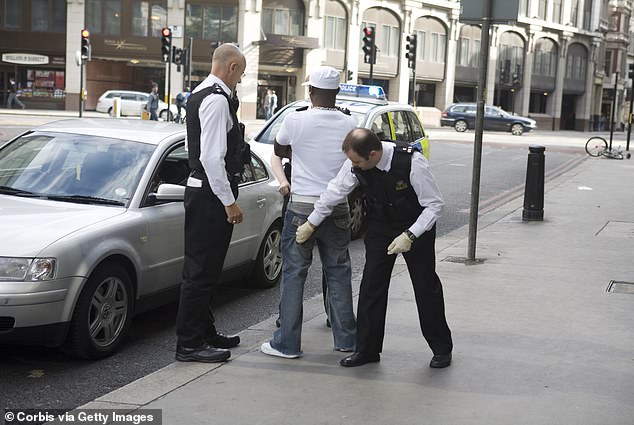More than 1,000 young black men who were added to Met Police ‘Gangs Matrix’ database after 2011 London riots are removed from list after Sadiq Khan ordered review
- Force was accused of ‘stigmatising’ young black men with no history of violence
- Many whose details were taken were only at risk of becoming involved in gangs
- Sadiq Khan ordered a review of the Metropolitan Police’s gang violence matrix
- More than 1,000 young black Londoners have been removed from the system
More than 1,000 young black men have been removed from a controversial police gangs database.
The Metropolitan Police’s gang violence matrix was created after the 2011 London riots, to identify those considered becoming involved in gang violence.
But campaigners accused forces of ‘stigmatising’ young black men – many with no history of violence or criminal convictions – sometimes on the strength of their social media posts.
London mayor Sadiq Khan ordered a review of the database, which includes suspected gang members and those seen as at risk of becoming involved in violence.
The Metropolitan Police’s gang violence matrix was created after the 2011 London riots, to identify those considered becoming involved in gang violence. Pictured, Police search a young black man whose car they had just stopped as he drove through the City of London
Critics labelled the matrix ‘racially discriminatory’, with figures showing some 80 per cent of people on the database are black, Asian and minority ethnic (BAME).
A Freedom of Information request to Scotland Yard in 2019 revealed the youngest person on the Matrix was 13 years of age, with 55 under the age of 16.
The Met also revealed the ethnicity breakdown of those on the Gangs Matrix, in 2019, as 268 White Europeans, compared to 2,505 identified as African-Caribbean individuals.
Figures released on Wednesday show the number of names on the list has dropped to 2,305, a 40% drop from a peak of 3,811 in August 2017 and the lowest in seven years.
The Mayor’s review led to more than 1,000 black males under the age of 25 being removed from the database, most of whom had very low rates of offending and victimisation in the year before and the year after being removed, according to analysis by City Hall.
The ‘gangs matrix’ was established in response to the riots of 2011.
Since then, the Met has gathered information on those linked to gangs and ranked them in a traffic light system as to the risk they pose.
Controversially, the database is shared with some other public sector bodies, including schools, local authorities and even job centres.
Mr Khan said today: ‘We simply cannot ignore the fact black Londoners have less trust in the Met and that is why my comprehensive overhaul of the gang violence matrix is so important to improving the trust and confidence London’s diverse communities have in our police.
‘As a direct result of the Met acting on my recommendations to make the matrix database more transparent, effective and more evidence based than ever before, more than 1,000 young black Londoners who should not have been on it have now been removed. At the same time detection rates have improved.
‘We know that gang-related violence still accounts for a significant proportion of the most serious violence in London, and the matrix is a necessary enforcement tool as well as a means for support and intervention, but it’s vitally important that the police continue to evaluate, improve and communicate how it is used to address concerns from communities about the disproportionate number of black Londoners and young men on the matrix.’

London mayor Sadiq Khan had ordered a review of the database
The matrix works by measuring the harm ‘gang nominals’ (people who are named on the matrix) pose.
It scores them based on evidence of them committing violence and weapons offences, or being involved in, or at risk from, gang violence.
From these scores every individual is graded as Red, Amber or Green (RAG rating) denoting the level of risk (victim) or harm (offenders) they present.
